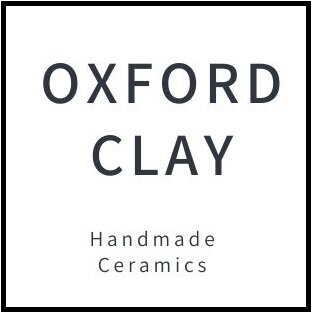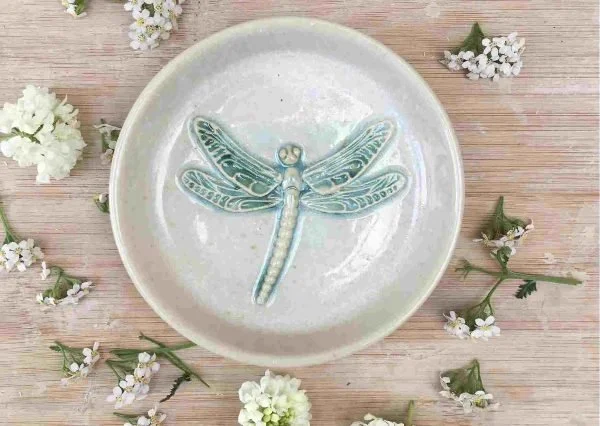5 Great Reasons to Make Your Own Pottery Glaze
There are so many beautiful commercial glazes available, for both earthenware and stoneware pottery. Commercial glazes are usually sold as powders that you need to add water to or ready-mixed liquid glazes.
This might lead you to think that making your own pottery glaze is complicated, but that’s actually not the case! Much like baking a cake, making a glaze involves following a recipe, mixing the dry ingredients together and then adding a liquid (water), you’re just cooking the end result, much, much hotter!
Often pottery glazes are made from a few simple ingredients such as crushed rocks (feldspar, quartz or flint for example), clays (such as china clay or ball clay), water, and metal oxide to add colour.
I’ve written a free workbook for you to show you just how easy it is to make your own pottery glaze.
But why make your own glaze at all when so many beautiful commercial ones are out there? Well, there are many reasons. Here we explore five excellent reasons to make your own pottery glaze.
Reason One: You can choose what's in your pottery glaze.
Some pottery ingredients are more harmful to humans, animals and the environment than others (2). By making your own glaze you can actively choose ingredients according to your own preferences and values. For example, by selecting glaze ingredients mined in areas with robust regulation you know that humans, animals and the environment are more likely to be protected as the ingredients are mined from the earth. You can also choose ingredients that are mined in areas closest to you, to minimise the carbon emissions and air pollution created by transportation.
Reason Two: You can actively exclude ingredients you may not want to use.
Some commercial glazes contain an ingredient called Bone Ash which is made from baked and ground animal bones. But if you follow a vegetarian or vegan lifestyle you may not want to use animal products in your pottery practice.
Another pottery ingredient frequently used in glazes is Talc. The organization Global Witness has found links between terrorist organisations and the talc trade (1). Talc can easily be replaced in glazes for other rocks such as dolomite. By making your own glazes you can actively choose to exclude certain glaze-making ingredients.
Reason Three: Making glazes is fun!
The world of glaze making is so interesting and exciting. By making your own glazes you can create infinite experiments with colour and texture. There is so much potential to be creative and craft a unique visual style in your pottery, with your own bespoke glazes. Websites like glazy.org allow potters to share glaze recipes with each other. You can have so much fun trying out different glaze ingredients or experimenting with plant ashes and seeing how each one produces different colours and textures in a glaze.
Reason Four: Making your own glaze is often cheaper than buying a ready-made one.
The raw ingredients used in glaze-making often cost much less than commercially made glazes or ready-mixed powders. For example, 5 kg of commercial powdered glaze designed to look like a traditional ash glaze could cost around £70, whereas buying the raw ingredients to make 5kg of an actual ash glaze would cost you around £8. You can collect plants, wood and leaves for free, and recycle them into an ash glaze!
Reason Five: You can add your own eco-conscious colour to glazes.
Commercial metal oxides are some of the least environmentally friendly pottery materials. By making your own glaze, you can create colour in your pottery in other ways. For example, switching china clay in a glaze recipe with a ball clay high in iron content such as Hymod Ball Clay can create a light yellowy green colour in a glaze (2). You can also create colour through ash glazing or by recycling metals into metal oxides to use as pottery colourants. Iron and Copper are the simplest metals to do this with, and produce beautiful brown and green colours respectively.
Learn more about making and colouring your own glazes in the books and mini-courses offered by Oxford Clay:
References:
Global Witness, 2018, At any price, we will take the mines: The Islamic State, The Taliban, And Afghanistan’s White Talc Mountains.
Tomlinson, K. 2021, Eco-conscious Pottery Glazing: Make your own pottery glazes with minimal harm to humans, animals and the environment.


